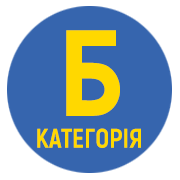Requirements for article design
We are looking forward to articles from scientists, academic staff of higher education institutions, postgraduate and postdoctoral students, employees of the legal and law enforcement sectors, etc. that have not previously been published (posted) in printed (electronic) journals and meet the relevant requirements.
Students’ articles co-authored with a research advisor are not accepted for publication.
Authors who do not have an academic degree, including postgraduate students, must provide a duly certified review by an advisor or a duly certified excerpt from the minutes of the department meeting with a recommendation to publish the article.
The authors are personally responsible for adherence to the principles of integrity, the veracity of the data presented, the accuracy of the quotes, statistics, and proper names, and the non-disclosure of confidential data. Articles violating these requirements are not accepted for publication. Plagiarism detected by the Editorial Board is an unconditional ground for the article's rejection.
Languages: Ukrainian, English, from 12 to 17 pages (Word for Windows, А 4, Times New Roman, 14, line spacing– 1.5, margins: top, bottom – 2 cm, left – 3 cm, right – 1.5 cm.). Pages are not numbered. Paragraph indention – 1.25 cm.
An article should consist of the following structural elements:
- UDC.
- Section.
- The author’s initials and surname.
- The author’s degree, academic title, post, affiliation, city, and country.
- ORCID (mandatory).
- Article title.
- Abstract and keywords in the article’s language (at least 1800 printed characters).
The abstract should be structured according to the logic of the article’s presentation and highlight the unexplored aspects of the problem; methodological tools, theoretical framework; main research results; recommendations, prospects for further research. The abstract shall not contain references and abbreviations and shall not duplicate the text.
- Below, main text, which should have the following structure:
Problem statement. The author states the relevance and substantiates the feasibility of the research and its relations with important scientific or practical tasks.
Analysis of recent research. It briefly assesses the current state of the problem under study in the world, an analysis of modern scientific publications that have originally driven the settlement of the specific problem, and the identification of previously unresolved parts of the general problem the article is devoted to.
Goal statement. The purpose (task) of the article should be based on preceding research, be formulated specifically, correspond to the article’s content and title, and determine previously unresolved parts of the general problem the article is devoted to.
Statement of basic material. It substantiates and presents research findings.
Conclusions. Key findings are presented, and suggestions on further development prospects are made.
The article text should be proofread and be free of spelling, punctuation, and stylistic errors. The article may contain the optimal number of graphics for the relevant type of research. Bibliographic references should be in square brackets, indicating the source number and specific pages (for example, [1, p. 25]), and the names of the sources should be given at the end of the article in the order of in- text citation.
Bibliography. In making up a list of references, please, adhere to the requirements of the National Standard of Ukraine DSTU 8302:2015 “Information and documentation. Bibliographic reference. General provisions and compilation rules”.
The list consists of at least 12 and a maximum of 30 items.
References. The references list should be in line with АРА standards (American Psychological Association) https://apastyle.apa.org/.
Each transliterated source is followed by the English translation in square brackets: title, title of the periodical, legal source, etc. At the end of the bibliographic description of each source, the language in which it was published is indicated in square brackets – [in Ukrainian].
If a publication has a DOI, it is indicated in References as it is the most accurate source of information about the article.
Tables and illustrations are numbered consecutively with Arabic numerals. Notes to the table are given only in the text. Captions are at the bottom and are centered. Figures and photographs (black and white, grayscale) are “embedded” in the main text and are provided additionally as separate files in one of the following formats: TIFF, PCX, JPG, BMP, CDR.
- Information in English: the author(s)’ surname and initials, degree, academic title, post, affiliation, city and country. Title, abstract and keywords in English (at least 1800 printed characters).
If the article is in English, the information about the authors, title, and abstract in English should be given first and in Ukrainian at the end of the article.







